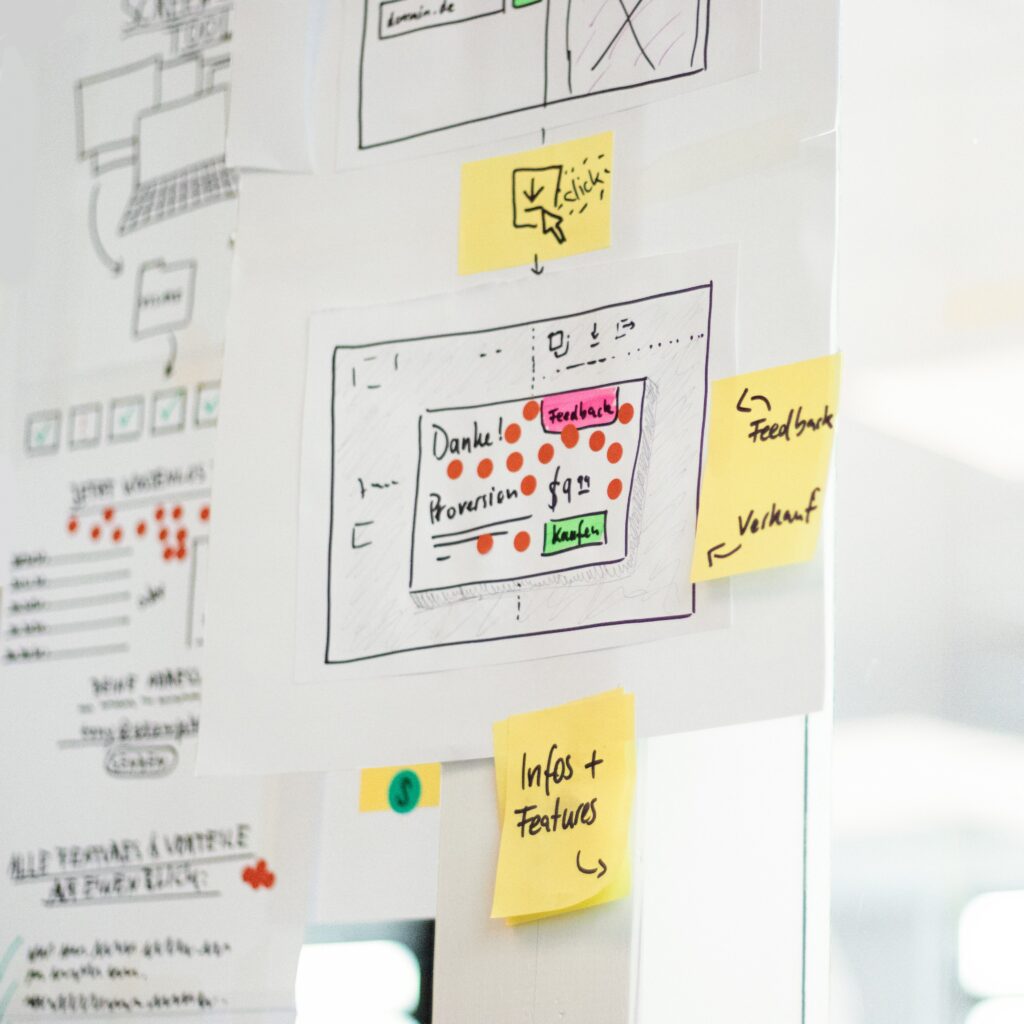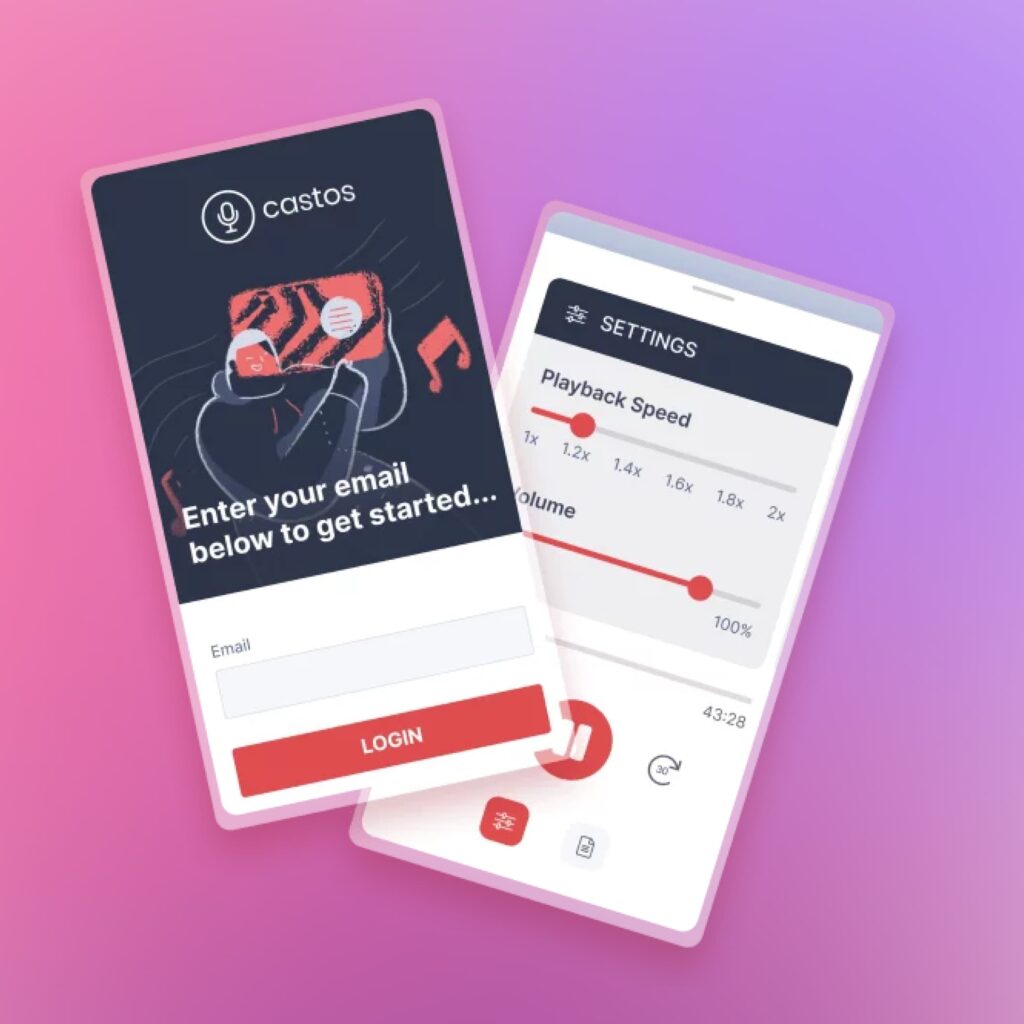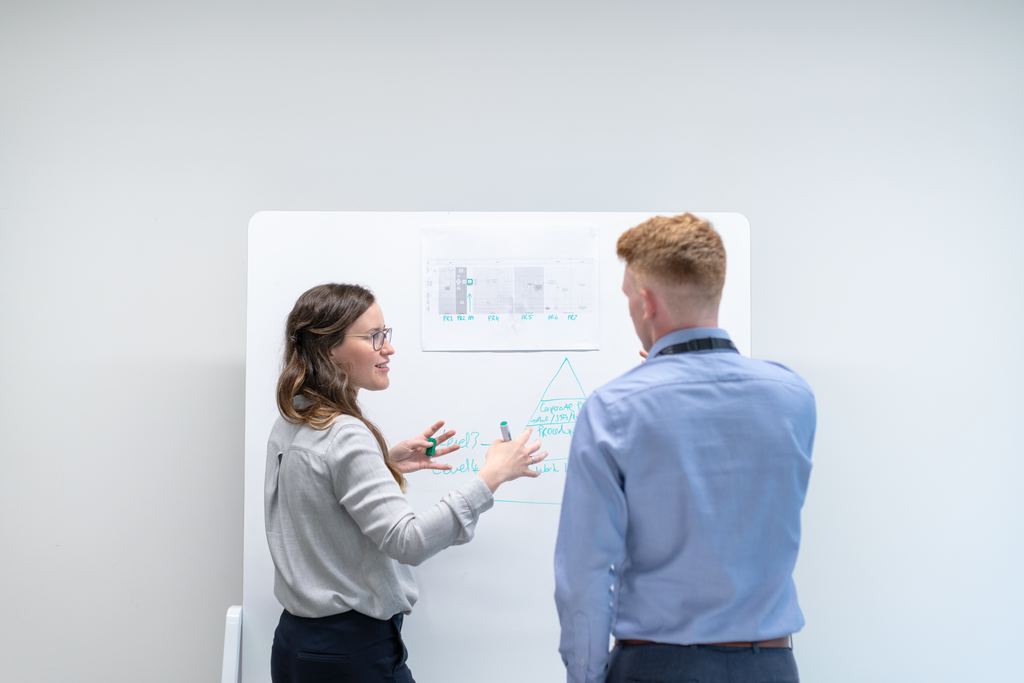Blog
The Complete Guide to Rapid Prototyping

Introduction
Software as a Service (SaaS), like every other tech space today, is defined by its relentless pace. In the last few years, we’ve witnessed a meteoric rise in software solutions, as new technology continues to emerge and customer expectations grow.
This is what has allowed rapid prototyping to emerge as a linchpin in the wheel of SaaS – a strategy that can significantly reduce the time-to-market and reduce development costs.
SaaS companies are under immense pressure to deliver innovative solutions swiftly and efficiently.
In this environment, the cost of slow development goes beyond just falling behind. It’s missed market opportunities, diminished investor interest, and an eroded competitive advantage.
The race to release is now not just about speed but also survival. The ability to iterate quickly and pivot in response to market feedback is a crucial determinant of success.
This guide presents a comprehensive overview of rapid prototyping within the SaaS space, offering insights into how companies can harness this approach to save money and launch faster.
The Pain Points of SaaS Prototyping
Software development is not without its challenges. A common scenario for SaaS companies is the trap of endless development cycles in the pursuit of a flawless product.
The Endless Cycle of Building and Rebuilding
Teams often find themselves building and re-building features to keep up with the changing demands of their users and stakeholders. This cycle can easily lead to project bloat, especially when there is a clear lack of direction or end goal.
The iterative process while valuable for refinement can become a challenge with SaaS products undergoing multiple iterations before a single user interaction even takes place leading to a loss of time and effort on unvalidated assumptions.
The Financial Strain of Missed Deadlines
Every day spent in development is a day not spent in the market accruing customers and revenue. Missed deadlines are not just a scheduling issue, but they also represent a significant financial risk, especially today.
The strain also encompasses human costs: teams stretched thin by prolonged development cycles may affect morale and lead to burnout.
In the following sections, we will talk about how rapid prototyping can be a remedy for all these issues and pain points.
Build a simple product that works and converts.
Get step-by-step guidance from product managers, UI/UX designers, and tech leads, taking you from idea to launch
What is Rapid Prototyping
Rapid prototyping is the practice of quickly creating a model of a new software application or features, allowing for immediate feedback from users and iterative design before writing the actual code.
This helps leverage various tools and techniques to mockup a product’s functionality and design, which can range from sketches to interactive, clickable prototypes.
The goal is to manifest ideas into tangible forms that stakeholders can see, interact with, and validate.
This helps companies avoid sunk costs associated with coding untested features since they can already visualize the product early in the development cycle.
The Strategic Advantage of Iterating Outside the Code
Iterating OUitside of the code offers a strategic advantage to SaaS companies by reducing the time and expenses associated with traditional development cycles.
A startup can pivot quickly, based on user feedback, market changes, or new insights, which is critical in a sector where speed to market can be a competitive advantage.
The practice also aligns with the lean startup methodology. Focusing on learning and adapting over predicting and planning.
Rapid prototyping can help companies streamline their product development process, reduce risks, and ensure that development efforts are geared toward user needs and business objectives.
Cost-Effective Prototyping
Cost-effective prototyping is a mindset that begins with understanding the true scope and scale of developing a viable and scalable software solution.
In this section, we will explore how to budget effectively for an MVP and the subsequent iterations that are often overlooked but equally critical for success.
Budgeting for an MVP: A Realistic Approach
When you begin your journey of building a SaaS product, it’s important to remember that the MVP is simply the starting point.
The MVP budget should represent the reality that your funding is not a complete product but to build for scalability
Budgeting for an MVP should be comprehensive including not just the creation of the initial product but the costs of adapting and enhancing your user base grows.
The best startups anticipate the need for change and allocate their budget accordingly. By doing so, they remain agile and responsive, which is often the difference between a product that succeeds and one that doesn’t.
No-Code to the Rescue
The rise of no-code platforms has been a huge game changer for the SaaS industry, enabling rapid prototyping at a speed and cost that were previously unattainable.
These platforms have empowered non-technical founders to create, test, and validate their software ideas without the need for extensive programming knowledge.
An Introduction to No-Code Platforms

No-code and low-code solutions offer a visual development environment where users can build applications using pre-made blocks and logic.
They allow people to bring to life digital products, allowing for a broader range of participants in the innovation process, greatly lowering the barrier to entry for SaaS development.
No-code prototypes can help you move faster during the early stages of your SaaS business and eventually bring in experienced developers to take the product beyond the MVP stage.
MVP Varieties and Their Impact
The concept of an MVP is pivotal in lean startup methodologies serving as the first offering to early adopters to begin the learning process as quickly as possible.
Let’s take a look at how a variety of MVPs, from singe-feature MVPs to piecemeal MVPs are designed to address specific hypotheses about a product market fit.
Single-Feature MVP
The Single-Feature MVP is grounded in the philosophy of clarity and focus. It’s about finding the one core offering that solves a critical problem for users.
The advantage of a Single-Feature MVP in rapid prototyping is its simplicity. It can be developed and released quickly, with minimal resources.
Its effectiveness can be measured more accurately since any user feedback can be directly attributed to the core feature rather than being diluted across several functionalities.
Piecemeal MVP
The Piecemeal MVP takes advantage of existing tools and services to create a functioning prototype without requiring extensive custom development.
By combining various third-party components, startups can assemble a working version of their product to validate the market need.
Piecemeal MVPs enable businesses to iterate on their product with speed and flexibility. Since the underlying components are often well-tested and supported, the risk of technical issues is reduced allowing for a focus on user experience and market fit.
In the scope of rapid prototyping, both Single-Feature and Piecemeal MVPs provide unique advantages.
The former allows for a concentrated validation effort on what’s most important, while the latter offers a quick assembly of a broader product vision, enabling fast-paced learning and adaptation.
By choosing the appropriate MVP type according to their specific goals, startups can effectively harness rapid prototyping to innovate and evolve in the competitive market that is SaaS today.
Customer-Centric Design Techniques
The Power of Customer Interviews in Shaping Prototypes

Customer interviews are an invaluable tool in the design and development processes of SaaS prototypes.
They help gain a deeper understanding of the customer’s needs, pains, and desires, which is crucial for creating a product that resonates with the market.
Using Customer Journey Mapping to Enhance Product Design
Customer journey mapping is a tool that helps identify touchpoints where users interact with the product and the opportunities for improvement at each stage.
Both customer interviews and journey mapping are critical components of a customer-centric approach to prototype design. They ensure that the development cycle begins and ends with the user, leading to higher satisfaction and a stronger product-market fit.
Customer journey mapping highlights ‘moments of truth’ where customers form critical impressions about your product. Rapid prototyping enables you to swiftly improve those touchpoints to make a positive impact.
Crafting a Clickable Prototype Quickly
Several tools have emerged as frontrunners in the creation of clickable prototypes. Some of the popular ones include:
- Figma: A tool that allows for collaborative design and prototyping.
- Sketch: A vector-based design tool for macOS, which integrates well with plugins and third-party apps for prototyping.
- Adobe XD: This is Adobe’s solution for design and prototyping, offering a range of tools and integration with other Adobe products.
- InVision: A design platform that’s great for creating interactive mockups.
- Balsamiq: A rapid wireframing tool that helps you work faster and smarter.
- Axure RP: Axure is built for more complex prototypes. It allows for rich prototyping with dynamic data and conditional logic.
Short and Concise Steps to Building Your Clickable Prototype
Step 1: The first step is to Identify the essential functions and user journeys for your prototype, focusing on the most important tasks your software will perform.
Step 2: Next, pick a tool that matches your prototype’s required complexity and collaboration level.
Step 3: Create a quick sketch of your interface ideas outside of any tool to facilitate easy adjustments.
Step 4: Digitize your sketches into basic wireframes, laying out the UI’s structural design.
Step 5: Add clickable elements and transitions to mimic real app interactions.
Step 6: Incorporate any specific images, icons, or branding to make your prototype look authentic.
Step 7: Test the prototype with real user or team feedback, refining your design accordingly.
Step 8: Document the design and interaction logic clearly for developers or stakeholders.
Step 9: Polish your prototype based on the feedback to ensure it aligns with user needs.
Step 10: Finally, conclude your prototyping phase with a version ready for presentations or development handoff.
Sketching and Wireframing: Visualizing Ideas
Sketching is the bedrock of prototype design, turning abstract ideas into visual reality. Human beings are very visual and starting with simple pens and papers helps you communicate your concepts without getting too bogged down with the details.
Quick Tips for Sketching
- Start with a goal: What are you trying to solve and convey with the sketch?
- User templates: Use grids to help maintain proportions.
- Keep it ‘sketchy’: These sketches should be fast and loose.
- Iterate: Start with the big picture and add details as you refine.
- Annotate as necessary: Use notes to explain elements that are not self-explanatory.
Transitioning from Paper to Pixels: Wireframing Basics
Wireframing is the process of translating your sketches into digital form. It’s about creating the blueprint of your application where functionality and usability take priority over aesthetics.
Steps to Creating Wireframes
- Choose the Right Tool: Select a wireframing tool that you are comfortable with and that has the features you need to create your designs, like drag-and-drop UI elements, easy-to-use templates, and collaboration features.
- Import Sketches: If you start with paper sketches, many tools allow you to import these images as the foundation for your digital wireframe.
- Define the Layout: Establish the placement of headers, footers, navigation, and content areas.
- Detail the UI Elements: Place buttons, text fields, and other interactive elements according to your sketches.
- Create a Flow: Link your wireframes to show how users will move from one page to another.
- Add Interactions: Define how each UI element behaves when interacted with—like what happens when a button is clicked.
- Refine and Iterate: Based on feedback, refine your wireframes until they closely represent the desired outcome of your design.
In the end, you should have a set of screens that can be used to test the structure and flow of your SaaS product, ready to be transformed into a higher-fidelity prototype that can be used for user testing or to guide the software development process.
Design and UX: Iteration as a Philosophy
When it comes to design and UX design in software development it’s all about functionality and not aesthetics.
It serves as a feedback loop for product development. Iterative design is a method that emphasizes early and continuous improvement of the design, based on user testing and feedback.
What are the principles of Iterative Design
Principles of Iterative Design:
- User-Centered: The design process begins and ends with the user’s needs and experiences.
- Feedback-Driven: Regular collection and incorporation of user feedback are crucial.
- Flexible Planning: Ready to adapt planning based on new insights and changes in user behavior.
- Incremental Changes: Small, manageable changes allow for more controlled evolution of the product.
- Collaborative Environment: Encouraging a collaborative culture where designers, developers, and stakeholders work together.
Testing Assumptions Through Design
Every design starts with a set of assumptions about user needs and behavior. Testing these assumptions is vital to ensure that the product being developed aligns with actual user requirements.
User Experience (UX) design is the discipline of creating a system that provides a seamless, intuitive, and value-driven experience for its users.
Methods for Testing Assumptions:
- Prototyping: Creating functional mock-ups or prototypes to simulate the final product for testing purposes.
- User Testing: Carrying out tests with actual users to observe their interactions with the design and gather qualitative feedback.
- A/B Testing: Comparing two versions of a page or feature to see which one performs better and meets user expectations more effectively.
- Analytics: Using data-driven insights to understand how users interact with the product and identify patterns that can inform design decisions.
- Iterative Redesign: Making continuous, incremental changes to the design based on testing and analytics, then testing again.
The philosophy of iteration in design asserts that a product is never finished but is in a constant state of evolution, improving as more is learned about the user.
Maintaining Code Quality in Rapid Development
The intersection of rapid prototyping and code quality
Rapid prototyping in the SaaS industry often raises concerns about the potential compromise of code quality.
These two elements are not mutually exclusive, they intersect where development practices prioritize both speed and scalability.
The key to balancing rapid prototyping and code quality lies in implementing a process that allows for quick iterations without accruing technical debt.
Balancing Prototyping with Code Integrity:
- Modular Development: Building code in self-contained modules that can be tested, reused, or refactored independently.
- Refactoring: Regularly revising and improving code to reduce complexity, which simplifies future changes and additions.
- Automated Testing: Automated tests help ensure that new features do not break existing functionality.
- Continuous Integration: Bringing together all developer working copies to a shared mainline several times a day to prevent divergence.
- Documentation: Keeping clear and concise documentation to ensure that the rationale behind code design is understood by future developers, and accessible to the necessary stakeholders.
Best Practices for Keeping Your Codebase Clean
Clean code is synonymous with readable, simple, and concise code that any developer can understand and modify.
In the fast-paced environment of SaaS prototyping, maintaining a clean codebase is crucial for the longevity and scalability of a product.
Techniques for Clean Code:
- Coding Standards: Setting up and strictly adhering to coding standards to create a uniform codebase that’s easier to manage.
- Code Reviews: Peer reviewing code to catch issues early and share knowledge across the team.
- Technical Debt Management: Being aware of technical debt—decisions that make code work in the short run but may cause issues later—and managing it with a clear repayment plan.
- Prudent Refactoring: Only refactoring when necessary and doing so incrementally to avoid large-scale disruptions.
- Efficient Architecture: Designing an efficient and robust architecture that supports rapid changes and growth.
Conclusion
Looking Ahead: The Future of Rapid Prototyping
The future of rapid prototyping is bright and boundless. As technology continues to evolve, so too will the tools and methodologies for building SaaS products.
The integration of AI, machine learning, and advanced analytics into prototyping tools will likely make predictive design a reality, where customer needs are anticipated and met even before they are fully expressed.
Furthermore, the rise of virtual collaboration tools will further streamline the prototyping process, making it more accessible and efficient.
In the future, the emphasis on code quality, customer alignment, and robust design will continue to be paramount, ensuring that rapid prototyping remains a bedrock of innovative, customer-focused product development.
Interested in learning more about how rapid prototyping could benefit you and your business? We are always happy to chat!
Read more


Case study:
Castos
How Castos attracted enterprise clients by developing a mobile app.

Scaling Software Development: Best Practices for Reducing Micro-management

Custom Software Developers—Should I Outsource to Them?

Collecting Customer Feedback for Enhanced Product Decisions

How You Can Avoid Software Bugs Upfront
Create a free plan for growth
Speak to Victor and walk out with a free assessment of your current development setup, and a roadmap to build an efficient, scalable development team and product.
“Victor has been great. Very responsive and understanding and really knows his stuff. He can go the extra mile by tapping into his prior experiences to help your company out. Really enjoyed working with him.”
Founder of Agency360

Victor Purolnik
Trustshoring Founder
Author, speaker, and podcast host with 10 years of experience building and managing remote product teams. Graduated in computer science and engineering management. Has helped over 300 startups and scaleups launch, raise, scale, and exit.